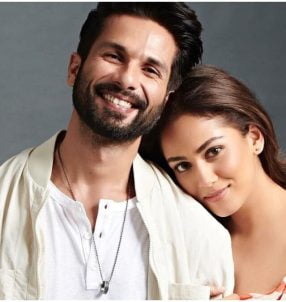For a lot of people (male, female, non-binary), finding clothing that’s comfortable and isn’t confined to a gender-specific label is no easy feat. Dannielle Owens-Reid is one of those people. For her, some clothes were too masculine and some were too feminine, and she knew too many people who were encountering the same problem. Owens-Reid is no stranger to making a difference: she’s the founder of Everyone Is Gay, a platform geared towards giving LGBTQ youth advice and having honest conversations. With the launch of Radimo LA in June, the 31-year-old can now add “brand founder and curator” to her resume.
Owens-Reid’s deep love for queer-owned brands, fashion and authenticity is what drove the formation of Radimo LA — but it wasn’t always easy. She definitely tried, and failed, but eventually figured out a way to make the brand work: she decided the brand should be more about accessibility than anything else. Owens-Reid has essentially gathered gender neutral brands in one place. “I think clothes are inherently gender neutral, [and] we put them in a section to make people feel uncomfortable,” explains Owens-Reid. “It was really a matter of getting rid of the labels and showing you how different people look in the same item of clothing.” With the help of friends like Kate Nash and Gabi Gregg, she modeled the clothes on people of all shapes and sizes. In the spirit of inclusivity, Radimo LA even links out to brands that the models are wearing that aren’t a part of Radimo LA.
How did you come up with the concept for Radimo LA?
It was a slow burn. I’ve had a love/hate relationship with fashion and my own personal style because I don’t really know any mainstream person or publication that represents the way I want to present myself. Even now, I can’t really think of anyone that looks like me or dresses how I want to dress. Every time there was a new androgynous brand, they were either too feminine or too masculine for me, and a lot of them I could never afford. I started to see style in pieces, rather than all-in-one. I stopped looking at an outfit as menswear or womenswear and instead looked at pieces overall, as if the sections didn’t exist. I think we are all low-key, very impatiently waiting for a brand to appear and be perfectly gender neutral, or for our favorite brands to strip the men’s and women’s tags. Until every brand on Earth gets it right, I wanted to put together something more than just a line of clothing; I wanted to create something that would help people see how many options we have with what is already available. This concept was a hybrid of so many ideas: curating brands, repurposing vintage, showing off my friends looks, linking out to brands that I love, etc.
Who did you look for for style inspiration?
In life, I look in a million different places. I like Jaden Smith, Harry Styles, Vivek Shraya and Ari Fitz. For the shoot, I chose friends of mine that all have very specific styles. I also brought in my friend Lulu Bernard to style the shoot. She brought some sick pieces that we paired with the Radimo products. I really wanted to showcase each person’s individual style because I felt like they all had something different to offer. I feel like one of the biggest issues we face when trying to find what feels good is not even knowing what styles exist. When I started to get interested in fashion, there wasn’t much to look to in the media, even online really, so I did a lot of looking around: at my friends, strangers, anyone cool. I had my friends bring some of their favorite pieces so I can link out to those brands. If you like someone’s look, [you can] shop all the brands they’re wearing, not just Radimo.
That’s really cool. Why make a gender-neutral clothing line?
I think clothes are inherently gender neutral, [and] we put them in a section to make people feel uncomfortable. It was really a matter of getting rid of the labels and showing you how different people look in the same item of clothing.
Why is making a gender-neutral clothing line so important in today’s world?
Feeling good about the way you are presented to the world can change your entire life. If you feel good about the way you look and it aligns perfectly with how you want people to see you, you gain so much confidence. You feel better in everything you’re doing because you feel great about you. People treat you differently based on how you look, so it’s great to be treated in a way that feels good to you.
How did you go about selecting models and influencers to promote the line?
They are all good friends of mine! I basically did a photoshoot of my emergency contact list. I am pretty obsessed with all of my friends individually, both because they’re amazing and inspiring people, and because their style is so epic. My goal is to showcase different masculine, feminine, and androgynous ways of dressing, and these are the people I know who do that very well. If they weren’t my friends, they would still be my dream models.
How long did the project launch take you—from conception to execution?
About a year and a half. My original idea was to create a line of clothing. I had maybe seven or eight pieces in mind that I was designing from scratch with a seamstress in New York. We worked together for months on samples, but things were so expensive [it was hard to] work alongside with me in LA and her in NY. I kept coming across great queer and women-owned brands that I wanted everyone to know about. I’ve always been obsessed with and inspired by ASOS, so I started to curation process sometime last year. This amazing photographer in San Francisco reached out and wanted to help. She took some dope shots with some of the brands stuff, but I couldn’t quite communicate the vision I had for how everything was supposed to be styled. I gave up a few times and fully ended the whole process in my mind and then kind of out of nowhere everything came together. It was meeting Charlotte Patmore that really inspired me to jump in again. We were at SXSW with Kate Nash; I was Tour Managing, and she was photographing and doing video for the whole experience. Watching Charlotte find and create a photo opportunity out of literally nothing made this lightbulb go off in my head. I knew people with the right looks and talent: I just had to throw it together. I talked to Charlotte about it and she was really into the idea, so we picked a day, and I coordinated my dream cast. My friends are all creatives who travel for work, so when I say it was a miracle that they were all in town at the same time, I mean it was a legit fucking miracle presented by whoever is looking out for me. I think Dre was only free for about three hours; Nick had to run in and leave early; Charlotte and Gabi both flew out the next day; Miles got in the night before, and Lulu wasn’t even meant to be available but at the last minute stayed the entire time. It came together because it was meant to: no other reason. Even finding the brand, Kidd Bell, was miraculous. One of the original pieces I started designing two years ago was a mock neck and all of a sudden here was this brand with revolutionarily inspiring mock-necks. It was like I couldn’t do what I originally wanted because there was something way, way better
Have you received any stories about how much the line has influenced people? Any cool ones you can tell?
It was so moving to see the response even before the brand was launched. So many people (like myself) were sitting out here waiting for something to exist that didn’t make us all feel so constrained by the clothes we want to wear. People were seeing photos on Instagram and already saying “Holy shit this is everything I’ve ever wanted.” Once I launched, seeing so many people flip out because it was affordable was another really nice and beautiful thing to hear. It was a main goal. Access is everything.
Do you have any celeb fans yet?
I’m really lucky because a lot of my friends are very influential, so I would say, “yes,” and point to all of my models. They’re also my unbelievably supportive chosen family. Kate is one of the actors in GLOW on Netflix, and as I’ve met a few of the girls on that show, they’ll ask about me. When I mention the brand, and they’re like, “Oh yeah! The brand looks so amazing, how is it going?,” I’m kind of like, “I just watched you cunt-punch-back-flip-power-slam someone, and you’re excited about my clothing brand?” Powerful women are my weakness, so it has been a lot.
What’s the end goal for Radimo LA? Do you see this clothing line evolving into something else?
The goal is to create a fashion blog and clothing brand hybrid. I want people to recognize that style is bigger than men’s fashion vs. women’s fashion, and to understand that we can look at brands that already exist to find looks that work for us. It’s ridiculous to me that a shirt is considered “women’s” when, really, it depends entirely on what else you’re wearing with that shirt or how it’s styled that determines. You could argue “a shirt with flowers is feminine,” and I can show you a transboy wearing a shirt with flowers who looks very masculine. I grew up in South Carolina, and I found out recently how to do the kind of research that actually helps me find the kind of clothes and styles I want to wear. I want to give people easy access to finding different styles. Radimo doesn’t have every item of clothing on Earth; I don’t have nearly enough plus-size options, but I do make a point to link out to good plus-size brands because at the end of the day, the point is access to the clothes that make you feel good. The goal isn’t to sell all those clothes and make money off of them. I just want to let people know they exist. My life goal is to help people feel good, and whatever I have to do to make that happen, I will. In a business sense, I would really like for a huge company to buy Radimo and make me the CEO with a six-figure salary. The logistics of running a brand is really difficult for me. I have about six jobs right now, and money is tight, which means I can’t dedicate a ton of time to Radimo. If I had the ability to dedicate myself to Radimo only for a month, I think I could see a ton of growth pretty quickly.
[“Source-papermag”]
























